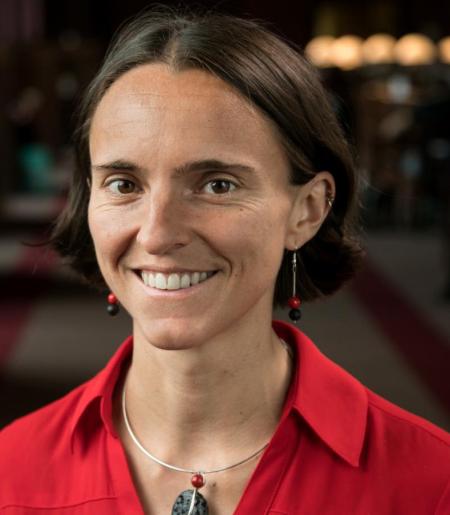Research Focus
Mathematical biology
My research program in mathematical biology focuses on developing and analyzing mathematical and computational models to examine biologically-motivated questions. In addition, the examination of biological problems often leads to rich quantitative challenges, which require the development of novel mathematics, models and quantitative tools. My current and past work includes mathematical and computational models using diverse techniques such as differential equations, stochastic processes and networks with wide applications including infectious diseases, immunology, and ecology.
Publications
- M. A. Greischar and L. M. Childs (2023) Extraordinary parasite multiplication rates in human malaria infections. Trends in Parasitology, 10.1016/j.pt.2023.05.006.
- Z. Qu, D. Patterson, L. M. Childs, C. J. Edholm, J. Ponce, O. F. Prosper, and L. Zhao (2023) Modeling Immunity to Malaria with an Age-Structured PDE Framework. SIAP, 10.1137/21M1464427.
A. M. Early, F. Camponovo, S. Pelleau, G. C. Cerqueira, Y. Lazrek, B. Volney, M. Carrasquilla, B. Thoisy, C. O. Buckee, L. M. Childs, L. Musset, and D. E. Neafsey (2022) Declines in prevalence alter the optimal level of sexual investment for the malaria parasite Plasmodium falciparum. PNAS, 10.1073/pnas.2122165119.
L. M. Childs, D. W. Dick, Z. Feng, J. M. Heffernan, J. Li, G. Rost (2022) Modeling waning and boosting of COVID-19 in Canada with vaccination. Epidemics, 10.1016/j.epidem.2022.100583.
M. Walker, K. Chandrasegaran, C. Vinauger, M. A. Robert, L. M. Childs (2021) Modeling the effect of Aedes aegypti's larval environment on adult body mass at emergence. PLOS Computational Biology, 10.1371/journal.pcbi.1009102.
C. M. Peak, R. Kahn, Y. H. Grad, L. M. Childs, R. Li, M. Lipsitch, C. O. Buckee (2020) Modeling the comparative impact of individual quarantine vs. active monitoring of contacts for the mitigation of COVID-19. The Lancet Infectious Diseases, doi.org/10.1016/S1473-3099(20)30361-3.
R.-M. Carlsson, L. M. Childs, Z. Feng, J. W. Glasser, J. M. Heffernan, J. Li, G. Rost (2020) Modeling the waning and boosting of immunity from infection or vaccination. Journal of Theoretical Biology, doi.org/10.1016/j.jtbi.2020.110265.
D. G. Paton, L. M. Childs, M. A. Itoe, I. E. Holmdahl, C. O. Buckee, F. Catteruccia (2019) Exposing Anopheles mosquitoes to antimalarials blocks Plasmodium parasite transmission. Nature, doi.org/10.1038/s41586-019-0973-1
N. M. Archer, N. Petersen, M. A. Clark, C. O. Buckee, L. M. Childs, M. T. Duraisingh (2018) Resistance to Plasmodium falciparum in sickle cell trait erythrocytes is driven by oxygen-dependent growth inhibition. PNAS, doi.org/10.1073/pnas.1804388115
C. Peak, L. M. Childs, Y. H. Grad, C. O. Buckee, (2017) Comparing nonpharmaceutical interventions for containing emerging epidemics. PNAS, doi:10.1073/pnas.1616438114
W. R. Shaw, P. Marcenac, L. M. Childs, C. O. Buckee, F. Baldini, S. P. Sawadogo, R. K. Dabire, A. Diabate, F. Catteruccia, (2016) Wolbachia infection in natural Anopheles populations affect egg laying and negatively correlate with Plasmodium development. Nature Communications, 7:11772. doi:10.1038/ncomms11772

